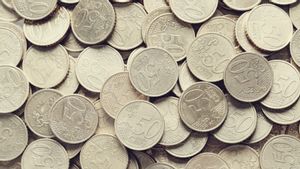YOGYAKARTA - Indonesia has a cultural wealth with local wisdom values contained in it, as an example in dance. According to Soedarsono, in the book Learning Indonesian and Foreign Dance Arts written by Restian, dance is an expression of the human soul expressed in beautiful and rhythmic body movements (according to the rhythm of music).
The art of dance certainly has the main element contained in it. The main element in dance is related elements so that they cannot be separated from each other. All these elements must be mastered by every dancer.
The main elements in a dance include sports (expert), wirama (irama), feel (flavor), and Wrupa (expression). Reported from Antara, see the full explanation below.
Motion is the most important element in a dance. When the audience sees the dancer's movements, they are usually able to guess what the dancer is playing.
Diversity or body elements are an element of dance related to movements. The movement in dance is divided into two, including pure movement and maturistic movement.
The pure movement is motion without purpose, while the movement of maktani has meaning or purpose that is to be conveyed to the audience.
In the art of dance, rhythm has an important role as an accompaniment of dance movements. Wirama or elements of rhythm come from music played by accompaniment.
A dancer must be able to combine dance movements with rhythm in order to create a harmonization of good movement. In addition, the beatings and tempos in the rhythm are used as a sign of when dancers should start dancing, change movements, and stop.
Wirama can be in the form of instruments that use musical instruments such as scenes, distills, feetpans, applause, or songs.
The main element in the next dance is taste or taste. Wirasa is the ability of a dancer in living a dance.
A dance generally contains a certain meaning that is to be expressed to the audience. This meaning will come when a dancer can give rise to a taste, which is shown through expression and movement.
Thus, the element of feel that has the aim of strengthening the character in dance performances so that it is easy to reveal to the audience.
The last element is the status or expression. This prototype is the ability of a dancer to express dances through facial expression and character deepening.
A dancer must be able to soul the character by expressing it through facial expression. Thus, the dancer's expression will support the delivery of messages in a dance.
In addition to being used as a means of entertainment and performance, it is used for various purposes and purposes. Below is the function of dance according to Jazuli in the book Telaah Theoretical Arts of Dance (1994).
As entertainment, dance is more focused not on the beauty of its movement, but on the entertainment aspect. In this type of dance, entertainment provides an opportunity for someone who has a hobby of dancing to channel hobbies and develop skills or goals that do not emphasize art values.
The dance function as a means of ritual ceremonies is carried out regarding individuals, families, or all villages at the start of a certain event.
Ceremony is a series of actions carried out according to customs or religion that are markers of the sacredness of an event. These actions are generally related to daily life, the environment, nature, and the rulers.
SEE ALSO:
As an educational medium, dance arts have the nature to develop aesthetic sensitivity through appreciation activities and creative work experience.
In addition, dance arts, especially traditional dances, describe cultural results that contain historical value. This can then become educational material or learning for the younger generation.
As a performance art, the art of dance is more directed at aesthetic entertainment for everyone who watches it. The art of dance as a show is usually used to welcome important guests, tour shows, or performances in the context of art festivals.
That's a review of the main elements in a dance. Hopefully this information will be useful. Visit VOI.id to get other interesting information.
The English, Chinese, Japanese, Arabic, and French versions are automatically generated by the AI. So there may still be inaccuracies in translating, please always see Indonesian as our main language. (system supported by DigitalSiber.id)


















